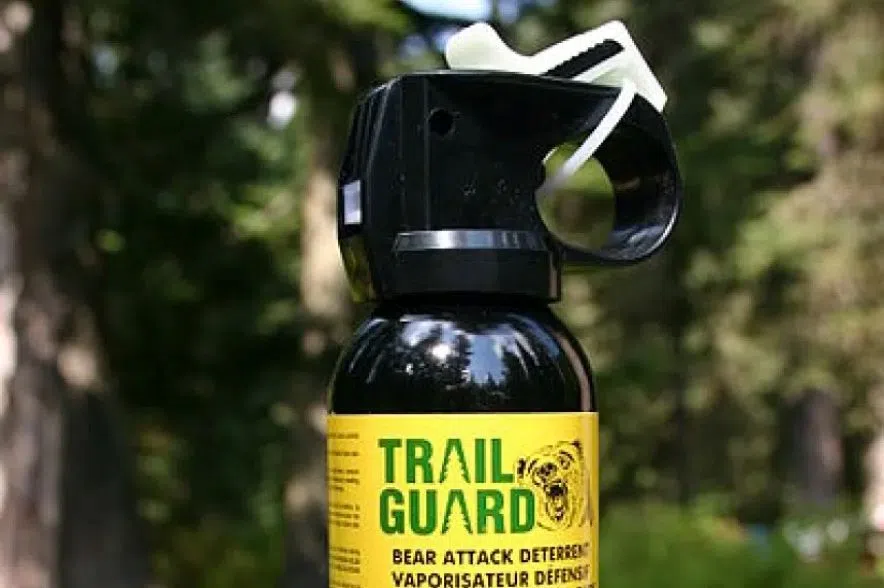The rising number of bear spray incidents reported by police in Saskatchewan has led to new regulations concerning the irritant.
On Tuesday, the provincial government announced it had created regulations to restrict the possession of bear spray in public urban spaces. The regulations also will prohibit altering bear spray in order to hide or disguise the product’s identity.
Anyone charged under the new regulations could face fines of up to $100,000.
“Over the last few years, there have been thousands of public disturbances involving bear spray across the province,” Justice Minister and Attorney General Bronwyn Eyre said in a release.
“These new regulations will improve public safety and provide police and wildlife officers with more options to seize and charge people in possession of bear spray, including in shopping malls, movie theatres, urban parks and on exhibition grounds.”
READ MORE:
- Bear spray set off inside Scott Collegiate after ‘altercation’
- Two girls charged after bear spray incident at Regina schools
- Wascana Pool’s opening day marred by bear spray incident
- Saskatoon police investigate multiple bear spray incidents at Saskatoon Ex
During a media conference Tuesday, Eyre described the regulations as an additional tool that police and conservation officers can use when confronted with a situation where someone is in possession of bear spray in a public urban area.
She pointed to high-profile incidents such as last year’s bear spray incident at Regina’s Wascana Pool during its opening day.
“We’ve seen too many incidents in recent years where this is creating great disruption, creating injury and creating fear,” Eyre said.
Eyre said the penalties could also apply to those who appear to be about to use bear spray, but that would be subject to officer discretion.
Estevan Police Service Chief Richard Lowen, the president of the Saskatchewan Association of Chiefs of Police, said police are fully in support of the new regulations.
“Bear spray has been a problem for a long time and we’ve all seen it on the street. We’ve seen it used multiple times over the years,” he said.
“Bear spray was being used inappropriately and when it’s not used for the tool that it was intended (for), then it becomes a problem for public safety and that’s what we’re trying to address in this.”
Paul Merriman, the province’s minister of corrections, policing and public safety, said the regulations will apply to existing provisions within the Criminal Code.
He said that over the past five years, there have been 3,000 incidents in which bear spray was recorded as the most serious weapon in calls to police.
According to Merriman, 968 of those calls were recorded in Saskatoon, 676 were in Regina, 671 were in Prince Albert, and 736 were reported to the RCMP in the province. It’s not known how many resulted in conviction.
Merriman said the regulation only applies to bear spray and not lower-concentration items like dog spray.
For the sake of the regulation, the province considers an “urban environment” to have more than 5,000 people — the formal definition of a city under the Cities Act.
However, Eyre said the regulations could be adjusted based on suggestions from smaller communities or sets of smaller communities.
According to the government, the regulations won’t apply to rural or northern areas where bear spray is typically used for its intended purpose. Conservation officers, hunters and hikers — people who require protection from wildlife in their jobs or in recreational activities — will be immune from prosecution.
As well, people will be allowed to take bear spray from a retail location to a place where it can be lawfully stored (like a private home) or lawfully used (like on a camping trip).
The regulations won’t apply to retailers and won’t require them to keep additional records or identification.
The government said “in limited, appropriate instances,” people can carry bear spray in urban spaces if they can show they have “a reasonable need” to carry it for protection. An example would be if a bear was recently sighted near their community.
— With files from 980 CJME’s Daniel Reech











